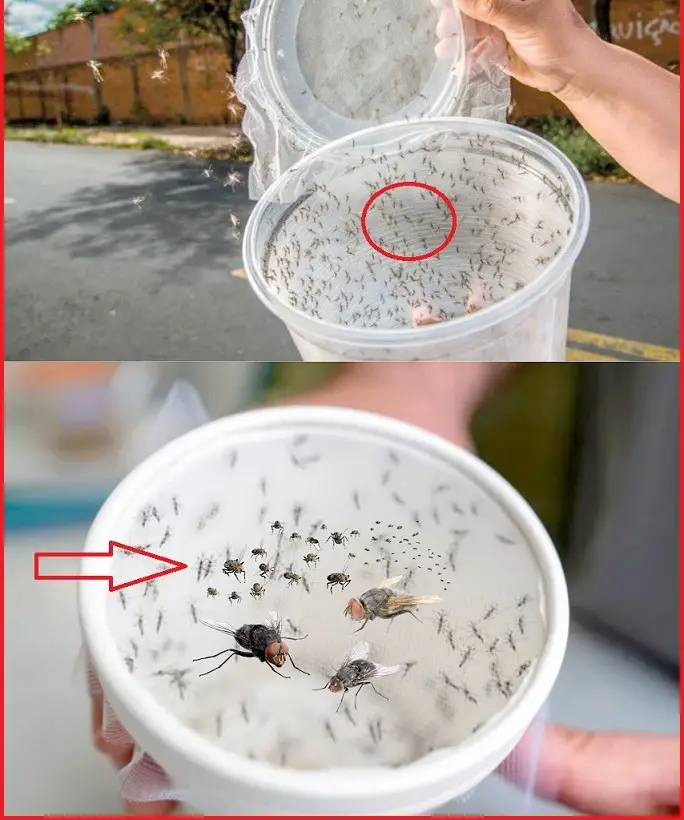Introduction to DIY Insect Repellents
Overview of the need for insect repellent
Nothing ruins a perfect home environment quite like the unwelcome intrusion of pests. From buzzing mosquitoes to stealthy cockroaches, these critters not only cause annoyance but also pose health risks by spreading diseases and triggering allergies. Traditionally, the battle against these pests has been fought with chemical repellents. However, these chemicals often come with their own set of problems, including potential risks to health and the environment.
Turning to DIY solutions, particularly those that use natural ingredients like rice vinegar, provides a breath of fresh air. These alternatives are not only safer but often just as effective as their chemical counterparts. The focus of our discussion, rice vinegar, is celebrated for its non-toxic properties and its ability to deter a wide range of insects. This article will guide you through creating your own rice vinegar insect repellent, ensuring you’re prepared to protect your home in a safe and sustainable way. Let’s get started on this eco-friendly journey to a pest-free living space.
What is Rice Vinegar Insect Repellent?
Definition and effectiveness
Rice vinegar insect repellent is a natural solution crafted from common household ingredients that are gentle on the environment but tough on pests. The main component, rice vinegar, is known for its mild acidity and distinctive smell, which are effective at repelling many types of insects. When combined with other ingredients like olive oil and shampoo, the mixture becomes a potent repellent that can be easily applied around the home.
This type of repellent is especially appealing because it does not contain the harmful chemicals found in many commercial products. It’s safe for use around children and pets, and it contributes to a healthier living environment. Additionally, its natural components ensure that it’s an eco-friendly choice, helping to reduce our chemical footprint. This makes rice vinegar insect repellent an ideal solution for those seeking effective pest control without compromising on health or environmental standards.
Ingredients for DIY Rice Vinegar Insect Repellent
Exact ingredients needed
Creating your own rice vinegar insect repellent is not only straightforward but also involves ingredients that are likely already in your pantry or easily accessible at local stores. Here’s what you’ll need to make this eco-friendly repellent:
- Vinegar: 1/2 cup – Vinegar acts as the base of this repellent. Its acidic nature is unappealing to many insects, making it an excellent natural deterrent.
- Olive Oil (or other vegetable oil): 1/2 cup – Oil helps to coat surfaces, increasing the longevity of the repellent’s effectiveness. It also helps in suffocating any insects that come into direct contact with the mixture.
- Shampoo: 1/2 cup – Shampoo acts as an emulsifier, helping to blend the oil and vinegar together. It also adds a pleasant scent to the mixture, improving the overall smell of the repellent.
These ingredients are not only effective but also safe, ensuring that your home remains free from toxic chemicals. The combination of vinegar, oil, and shampoo creates a barrier that insects avoid, protecting your spaces from unwanted guests without the use of harsh chemicals.
Preparation and application
- In a mixing bowl, combine 1/2 cup of vinegar with 1/2 cup of olive oil.
- Add 1/2 cup of shampoo to the mixture.
- Stir the ingredients together until well combined.
- Transfer the mixture to a spray bottle for easy application.
To use, shake the spray bottle well before each use. Spray the repellent in areas where insects are present, such as the kitchen or outdoor seating areas. Reapply the repellent as needed, especially after cleaning or if it rains. This simple, homemade solution provides an effective and safe way to keep your home pest-free.
Step-by-Step Recipe
Detailed preparation guide
Creating your own rice vinegar insect repellent is a straightforward process that anyone can undertake with minimal effort. Here’s how to mix up your batch of this effective, natural repellent:
- Mix the base ingredients:
- Start by taking a clean mixing bowl. Pour 1/2 cup of rice vinegar into the bowl. Rice vinegar, known for its mild acidity, acts as the primary repelling agent.
- Add 1/2 cup of olive oil or another vegetable oil of your choice. The oil helps the solution adhere to surfaces longer, making the repellent more effective over time.
- Next, include 1/2 cup of shampoo. This not only helps emulsify the oil and vinegar, ensuring a more consistent texture, but also enhances the scent of your repellent.
- Stir thoroughly:
- Use a whisk or a spoon to mix the ingredients together until they are well combined. Ensure there are no oil clumps, and the mixture has a smooth, uniform consistency.
- Transfer to a spray bottle:
- Carefully pour the mixture into a spray bottle. This can be any clean spray bottle that has a fine mist setting. Using a funnel can help avoid spills during this step.
- Final preparation:
- Tighten the cap of the spray bottle and give it a good shake. This ensures that any settling ingredients are thoroughly mixed before each use.
Application tips
- Shake well: Always shake the bottle vigorously before spraying to ensure the ingredients are mixed.
- Target key areas: Focus on spraying entry points such as windows, doorways, and any cracks where insects might enter. Also, consider areas where insects are frequently noticed, like kitchen counters or near trash bins.
- Reapplication: The repellent should be reapplied regularly, especially after cleaning or heavy rain, to maintain its effectiveness.
This DIY rice vinegar insect repellent not only offers a safe and natural way to keep pests at bay but also ensures that your home stays free from the harsh chemicals often found in commercial repellents. Enjoy your cleaner, greener living space with peace of mind.
Application Tips and Safety
How and where to apply the repellent
Using your homemade rice vinegar insect repellent effectively is key to maximizing its benefits. Here are some essential tips on how and where to apply this natural solution:
- Indoor use: Focus on areas where insects are most likely to enter or congregate, such as windowsills, door frames, and the edges of rooms. The kitchen, particularly near bins and storages areas, is a crucial area to target to prevent ants, fruit flies, and other pests.
- Outdoor use: Spray around patios, decks, and outdoor seating areas to create a barrier against mosquitoes and flies. It’s also effective along the perimeter of your home.
Safety precautions when handling and applying the mixture
- Skin contact: While all ingredients are generally safe, it’s wise to wear gloves during preparation and application, especially if you have sensitive skin.
- Inhalation: Avoid inhaling the spray directly. Although the ingredients are safer than commercial chemicals, it’s best to ensure good ventilation when applying indoors.
- Storage: Keep the repellent in a cool, dark place to maintain its efficacy. Ensure the cap is tightly sealed to prevent leaks and evaporation.
Following these application tips and safety precautions will help ensure that your use of rice vinegar insect repellent is both effective and safe. Regular application as directed helps maintain an insect-free environment without the risks associated with synthetic pesticides.
Comparison with Other DIY Repellents
Pros and cons of rice vinegar repellent versus other types
When it comes to DIY pest control, rice vinegar insect repellent stands out for several reasons, but how does it stack up against other homemade solutions? Here’s a comparison to help you understand its relative strengths and weaknesses:
- Effectiveness: Rice vinegar is effective against a broad spectrum of household pests, particularly due to its strong odor and acidic nature, which many pests find repulsive. However, for some pests like ticks and spiders, other ingredients like essential oils or diatomaceous earth may be more effective.
- Safety: One of the significant advantages of rice vinegar repellent is its safety profile. It is non-toxic and safe for use around children and pets, unlike some essential oil-based repellents which can be toxic to certain pets or irritating to children’s skin.
- Cost and accessibility: Rice vinegar is typically less expensive and more readily available than some specialized ingredients like neem oil or citronella oil, making it a more accessible option for many households.
- Duration of effectiveness: While rice vinegar provides an immediate deterrent, it may need to be reapplied more frequently than repellents made with stronger substances like essential oils or commercial products designed for long-lasting effects.
Overall, while rice vinegar insect repellent is an excellent choice for those seeking a safe and natural option, it’s important to choose the right type of repellent based on the specific pests you are dealing with and the severity of your pest problem. This DIY solution is ideal for those who prioritize safety and environmental sustainability.
FAQs
Q1: How effective is rice vinegar as an insect repellent?
- Rice vinegar is quite effective against a variety of common household pests like ants, fruit flies, and mosquitoes due to its acidic nature and strong scent, which act as natural deterrents. However, its effectiveness can vary based on the type of insect and the concentration of the vinegar used.
Q2: Is rice vinegar repellent safe to use around pets and children?
- Yes, one of the biggest advantages of using rice vinegar insect repellent is its safety. It is non-toxic and does not contain harmful chemicals, making it safe for use around both pets and children. However, it’s always a good practice to keep any type of repellent out of reach of children and to use it according to directed precautions.
Q3: How often should I reapply rice vinegar insect repellent?
- The repellent should be reapplied frequently, especially in high-traffic areas or after cleaning activities that might remove the repellent. As a general rule, reapplying every week or after any significant rain is a good practice to maintain its effectiveness.
Q4: Can I use rice vinegar repellent on all surfaces?
- Rice vinegar repellent is generally safe for most surfaces but test it on a small, inconspicuous area first if you’re concerned about potential staining or reactions, especially on delicate fabrics or painted surfaces.
Q5: Are there any pests that rice vinegar repellent does not work against?
- While effective against many insects, rice vinegar may not be as effective against larger pests or certain types of insects like spiders and ticks. For these pests, stronger repellents or professional pest control methods might be necessary.
These FAQs provide additional insights into the use and effectiveness of rice vinegar insect repellent, helping you to use it more effectively and understand its limitations.
Embracing Natural Solutions for Insect Control
Embracing DIY rice vinegar insect repellent is not just about choosing a natural solution; it’s about making a conscious decision to protect your living space in a safe and sustainable manner. This repellent offers a gentle yet effective way to deter pests, ensuring your home remains both welcoming and insect-free. Whether you’re dealing with common kitchen pests or looking to enjoy your outdoor spaces without the annoyance of biting insects, rice vinegar provides a practical and eco-friendly option. Let this simple, homemade repellent be your first step towards a healthier, more environmentally conscious approach to pest control.

